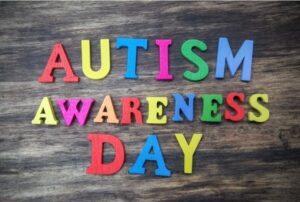Jason is a 5-year-old boy from the United States, and he has been struggling with nasal congestion for several days. Although he doesn’t have a fever or flu symptoms, he complains of a blocked nose that is affecting his sleep and appetite. As parents, many are left wondering: Why does my child’s nasal congestion last so long? Is it just a cold, or could it be something more complex?
Common Causes of Nasal Congestion
Nasal congestion is a common health issue in children, especially during the cold season. However, some children’s nasal congestion may persist for weeks or even months. This prolonged nasal congestion may not be caused by a common cold, but by other underlying health issues.
- Allergic Rhinitis
Allergic rhinitis is a common cause of nasal congestion in children, especially during the spring and fall seasons. Allergic rhinitis occurs when the body has an allergic reaction to airborne allergens such as pollen, dust mites, or pet dander. When children are exposed to these allergens, they may experience nasal congestion, runny nose, sneezing, and even itchy eyes or tearing.
Symptoms:
- Persistent nasal congestion
- Clear, watery nasal discharge
- Seasonal symptoms, particularly during pollen season
- Itchy eyes and sneezing
Treatment:
- Minimize exposure to allergens and maintain a clean home environment
- Use allergy medications (e.g., antihistamines)
- Consider using air purifiers or humidifiers
- Sinusitis
Sinusitis (or a sinus infection) is another common cause of nasal congestion, especially if the congestion lasts for weeks. Sinusitis is typically caused by a bacterial infection, although viruses can also be responsible. The symptoms of sinusitis are usually more severe and may be accompanied by thick yellow or green mucus, facial pain, headache, and mild fever.
Symptoms:
- Nasal congestion lasting more than 10 days
- Thick yellow or green nasal discharge
- Facial pressure or pain
- Coughing and low-grade fever
Treatment:
- Antibiotics prescribed by a pediatrician (if bacterial infection)
- Nasal saline irrigation to relieve congestion
- Avoid overuse of decongestant medications
- Adenoid Hypertrophy
Adenoids are small tissue masses located in the back of the nasal cavity, playing an important role in immune defense. However, in some children, the adenoids become enlarged, obstructing the nasal passages and causing persistent nasal congestion. This condition is common in children aged 2 to 6 years and often accompanies frequent ear infections and breathing difficulties.
Symptoms:
- Persistent nasal congestion, especially at night
- Frequent ear infections
- Mouth breathing or snoring
Treatment:
- If adenoid hypertrophy affects breathing and sleep, surgical removal of the adenoids may be necessary
- Nasal sprays and allergy medications may also help
- Frequent Colds or Viral Infections
Children’s immune systems are still developing, which makes them more susceptible to viral infections, particularly cold viruses. During a cold or upper respiratory infection, children often show symptoms like nasal congestion and a runny nose, which typically improve after a few days. However, some children may frequently catch colds, leading to recurring nasal congestion.
Symptoms:
- Nasal congestion with sore throat, cough, and other cold symptoms
- Symptoms improve after several days but may recur
Treatment:
- Nasal irrigation, humidifiers, and other methods to relieve congestion
- Ensure adequate hydration and rest for the child’s recovery
- If the nasal congestion persists too long, medical attention is needed to rule out other causes
- Structural Problems
In some children, nasal congestion may be related to structural problems in the nose, such as congenital nasal malformations or a deviated septum. If these structural issues are present from birth, the child may experience chronic or recurring nasal congestion.
Symptoms:
- Persistent nasal congestion without other cold symptoms
- Frequent unilateral nasal congestion without signs of infection
Treatment:
- If there is a deviated septum or other structural issues, surgery may be necessary
- Nasal irrigation and sprays can also help relieve symptoms
How to Relieve Persistent Nasal Congestion in Children?
- Saline Nasal Irrigation: Saline irrigation helps to clear the nasal passages and relieve congestion. You can use over-the-counter saline sprays or drops designed for children.
- Humidify the Air: A humidifier can help ease nasal congestion caused by dry air, especially during the cold winter months.
- Increase Fluid Intake: Encourage your child to drink plenty of water or warm fluids to help clear the nasal passages.
- Adjust Sleeping Conditions: Elevate your child's head slightly while sleeping to improve breathing.
- Avoid Overuse of Medications: Long-term use of decongestants can lead to rebound congestion, so always use medications under a doctor’s guidance.
Conclusion
Persistent nasal congestion in children may be caused by allergies, sinusitis, adenoid hypertrophy, frequent colds, or structural issues. Parents should closely monitor their child's symptoms and consult a doctor to identify the underlying cause and start effective treatment. In daily life, strengthening the child's immune system, maintaining a clean and humid home environment, and avoiding overuse of medications can help the child manage nasal congestion comfortably throughout the seasons.
References
- American Academy of Pediatrics. (2022). Nasal Congestion in Children.
- Mayo Clinic. (2023). Sinus Infection (Sinusitis) in Children.
- WebMD. (2023). Chronic Nasal Congestion in Children: Causes and Treatments.
- National Institutes of Health. (2022). Allergic Rhinitis and Sinusitis in Children.













